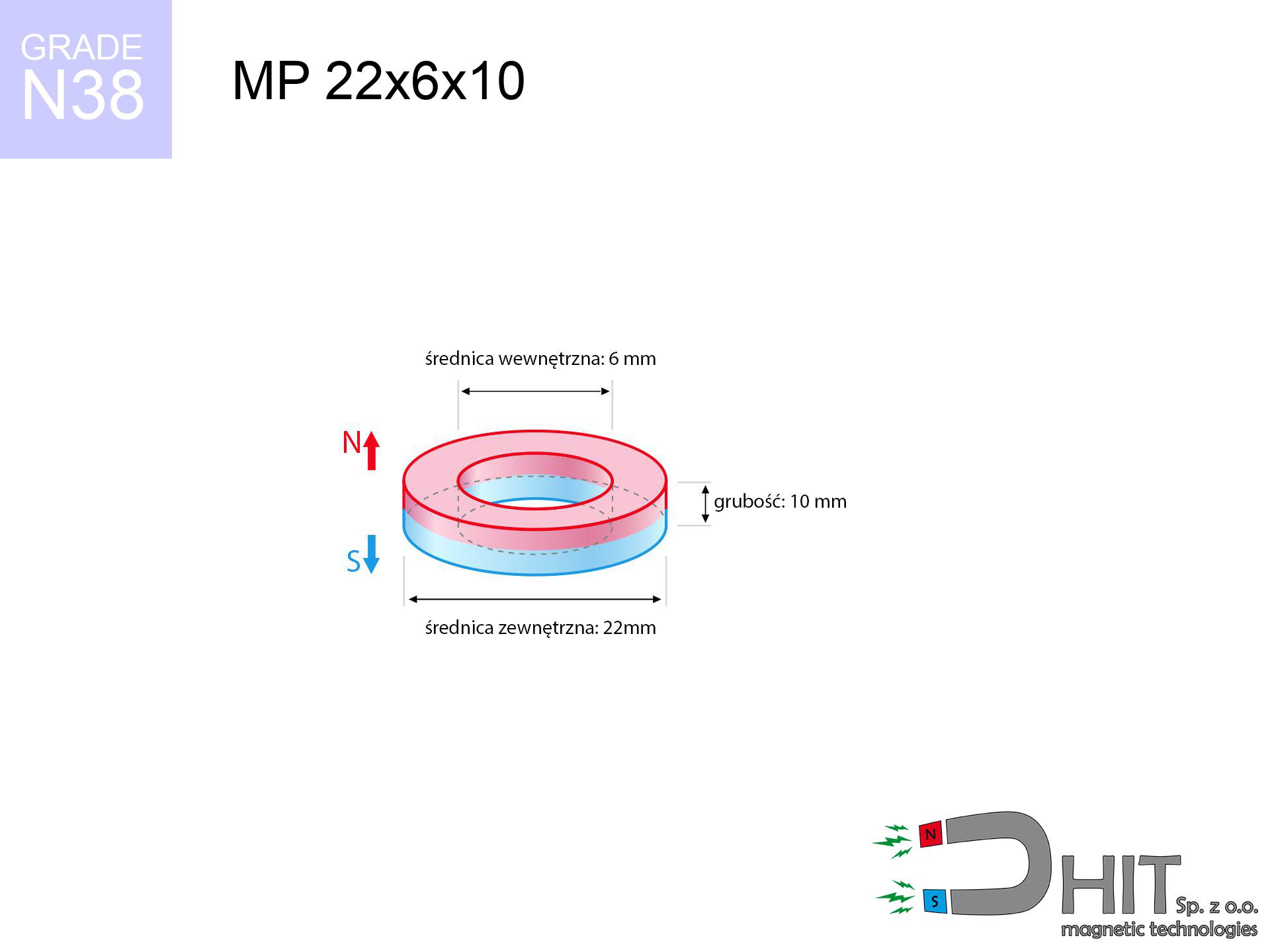UMGGW 34x8 [M4] GW / N38 - magnetic holder rubber internal thread
magnetic holder rubber internal thread
Catalog no 160306
GTIN/EAN: 5906301813644
Diameter Ø
34 mm [±1 mm]
Height
8 mm [±1 mm]
Weight
22 g
Load capacity
7.70 kg / 75.51 N
9.84 ZŁ with VAT / pcs + price for transport
8.00 ZŁ net + 23% VAT / pcs
bulk discounts:
Need more?
Call us now
+48 22 499 98 98
or drop us a message by means of
our online form
our website.
Lifting power as well as structure of magnetic components can be tested using our
force calculator.
Same-day processing for orders placed before 14:00.
Technical - UMGGW 34x8 [M4] GW / N38 - magnetic holder rubber internal thread
Specification / characteristics - UMGGW 34x8 [M4] GW / N38 - magnetic holder rubber internal thread
| properties | values |
|---|---|
| Cat. no. | 160306 |
| GTIN/EAN | 5906301813644 |
| Production/Distribution | Dhit sp. z o.o. |
| Country of origin | Poland / China / Germany |
| Customs code | 85059029 |
| Diameter Ø | 34 mm [±1 mm] |
| Height | 8 mm [±1 mm] |
| Weight | 22 g |
| Load capacity ~ ? | 7.70 kg / 75.51 N |
| Manufacturing Tolerance | ±1 mm |
Magnetic properties of material N38
| properties | values | units |
|---|---|---|
| remenance Br [min. - max.] ? | 12.2-12.6 | kGs |
| remenance Br [min. - max.] ? | 1220-1260 | mT |
| coercivity bHc ? | 10.8-11.5 | kOe |
| coercivity bHc ? | 860-915 | kA/m |
| actual internal force iHc | ≥ 12 | kOe |
| actual internal force iHc | ≥ 955 | kA/m |
| energy density [min. - max.] ? | 36-38 | BH max MGOe |
| energy density [min. - max.] ? | 287-303 | BH max KJ/m |
| max. temperature ? | ≤ 80 | °C |
Physical properties of sintered neodymium magnets Nd2Fe14B at 20°C
| properties | values | units |
|---|---|---|
| Vickers hardness | ≥550 | Hv |
| Density | ≥7.4 | g/cm3 |
| Curie Temperature TC | 312 - 380 | °C |
| Curie Temperature TF | 593 - 716 | °F |
| Specific resistance | 150 | μΩ⋅cm |
| Bending strength | 250 | MPa |
| Compressive strength | 1000~1100 | MPa |
| Thermal expansion parallel (∥) to orientation (M) | (3-4) x 10-6 | °C-1 |
| Thermal expansion perpendicular (⊥) to orientation (M) | -(1-3) x 10-6 | °C-1 |
| Young's modulus | 1.7 x 104 | kg/mm² |
Chemical composition
| iron (Fe) | 64% – 68% |
| neodymium (Nd) | 29% – 32% |
| boron (B) | 1.1% – 1.2% |
| dysprosium (Dy) | 0.5% – 2.0% |
| coating (Ni-Cu-Ni) | < 0.05% |
Sustainability
| recyclability (EoL) | 100% |
| recycled raw materials | ~10% (pre-cons) |
| carbon footprint | low / zredukowany |
| waste code (EWC) | 16 02 16 |
View also deals
Advantages and disadvantages of neodymium magnets.
Advantages
- They virtually do not lose strength, because even after ten years the performance loss is only ~1% (in laboratory conditions),
- They feature excellent resistance to weakening of magnetic properties due to external fields,
- Thanks to the elegant finish, the coating of Ni-Cu-Ni, gold-plated, or silver-plated gives an clean appearance,
- Magnetic induction on the working part of the magnet remains very high,
- Neodymium magnets are characterized by very high magnetic induction on the magnet surface and are able to act (depending on the form) even at a temperature of 230°C or more...
- Due to the possibility of precise molding and customization to specialized projects, magnetic components can be modeled in a variety of shapes and sizes, which amplifies use scope,
- Significant place in high-tech industry – they are utilized in hard drives, brushless drives, diagnostic systems, also modern systems.
- Relatively small size with high pulling force – neodymium magnets offer impressive pulling force in compact dimensions, which allows their use in miniature devices
Cons
- To avoid cracks under impact, we recommend using special steel housings. Such a solution secures the magnet and simultaneously increases its durability.
- When exposed to high temperature, neodymium magnets experience a drop in power. Often, when the temperature exceeds 80°C, their power decreases (depending on the size and shape of the magnet). For those who need magnets for extreme conditions, we offer [AH] versions withstanding up to 230°C
- Magnets exposed to a humid environment can rust. Therefore while using outdoors, we suggest using water-impermeable magnets made of rubber, plastic or other material resistant to moisture
- We suggest casing - magnetic mechanism, due to difficulties in realizing threads inside the magnet and complex shapes.
- Possible danger to health – tiny shards of magnets can be dangerous, if swallowed, which gains importance in the context of child safety. Additionally, tiny parts of these products are able to complicate diagnosis medical in case of swallowing.
- Due to expensive raw materials, their price is higher than average,
Holding force characteristics
Breakaway strength of the magnet in ideal conditions – what it depends on?
- on a block made of mild steel, effectively closing the magnetic field
- possessing a massiveness of min. 10 mm to avoid saturation
- characterized by smoothness
- with total lack of distance (no coatings)
- during detachment in a direction perpendicular to the mounting surface
- at conditions approx. 20°C
What influences lifting capacity in practice
- Clearance – the presence of any layer (rust, tape, gap) acts as an insulator, which reduces capacity steeply (even by 50% at 0.5 mm).
- Pull-off angle – note that the magnet has greatest strength perpendicularly. Under sliding down, the holding force drops drastically, often to levels of 20-30% of the maximum value.
- Element thickness – for full efficiency, the steel must be adequately massive. Paper-thin metal limits the lifting capacity (the magnet "punches through" it).
- Chemical composition of the base – mild steel gives the best results. Higher carbon content reduce magnetic properties and lifting capacity.
- Surface finish – ideal contact is possible only on smooth steel. Rough texture reduce the real contact area, reducing force.
- Temperature – temperature increase causes a temporary drop of induction. It is worth remembering the maximum operating temperature for a given model.
Holding force was checked on a smooth steel plate of 20 mm thickness, when the force acted perpendicularly, however under attempts to slide the magnet the holding force is lower. Moreover, even a small distance between the magnet and the plate lowers the lifting capacity.
Safety rules for work with NdFeB magnets
Pacemakers
People with a heart stimulator should keep an safe separation from magnets. The magnetism can interfere with the functioning of the life-saving device.
Keep away from computers
Data protection: Neodymium magnets can damage data carriers and delicate electronics (heart implants, hearing aids, mechanical watches).
This is not a toy
Always store magnets away from children. Choking hazard is high, and the consequences of magnets connecting inside the body are life-threatening.
Beware of splinters
Despite the nickel coating, neodymium is brittle and cannot withstand shocks. Do not hit, as the magnet may crumble into sharp, dangerous pieces.
Crushing risk
Pinching hazard: The pulling power is so immense that it can result in blood blisters, pinching, and broken bones. Protective gloves are recommended.
Avoid contact if allergic
Medical facts indicate that the nickel plating (standard magnet coating) is a potent allergen. For allergy sufferers, refrain from direct skin contact and choose versions in plastic housing.
Safe operation
Handle with care. Neodymium magnets attract from a distance and connect with massive power, often quicker than you can react.
Flammability
Fire warning: Neodymium dust is explosive. Avoid machining magnets without safety gear as this risks ignition.
Heat warning
Control the heat. Heating the magnet to high heat will permanently weaken its magnetic structure and strength.
Compass and GPS
GPS units and smartphones are extremely susceptible to magnetism. Direct contact with a powerful NdFeB magnet can ruin the sensors in your phone.

![Rubber coated magnetic holder UMGGW 34x8 [M4] GW / N38 Rubber coated magnetic holder UMGGW 34x8 [M4] GW / N38](https://cdn3.dhit.pl/graphics/banners/magnet.webp)
![UMGGW 34x8 [M4] GW / N38 - magnetic holder rubber internal thread](https://cdn3.dhit.pl/graphics/products/umg-34x8-m4-gw-kek.jpg)





